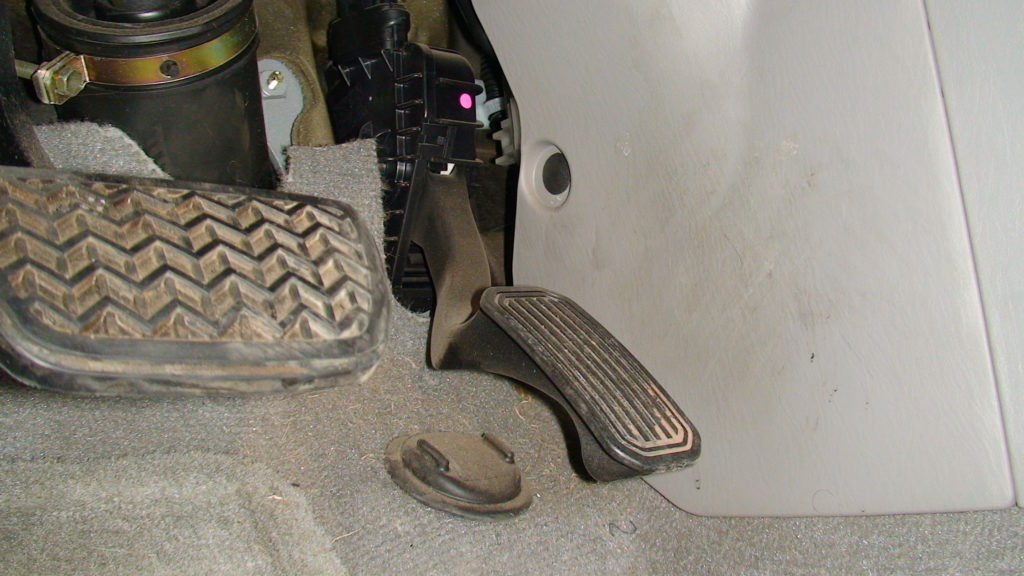As the last work week in June slouched to a close, Toyota announced another floor mat recall – this time for 154,000 model year 2010 Lexus RX350 and RX450 H vehicles. Frankly, we were slack jawed. This is the automaker’s fifth floor mat recall since 2005 and the eleventh alleging that unintended acceleration was caused by something interfering with the accelerator pedal – all weather mats, plastic trim, condensation in the pedal’s friction lever. That’s double digits, people.
NHTSA quickly claimed credit for influencing the recall:
“NHTSA approached Toyota regarding this issue late last month after the agency observed an increase in consumer complaints and other reports regarding pedal entrapment in these vehicles. When Toyota confirmed last week that it had received a significant volume of complaints on the same issue, NHTSA asked the manufacturer to conduct a recall.”
We guess that at this point, NHTSA and Toyota are tight enough that the agency can dispense with the whole investigation thing and just pick up the phone. So, the public doesn’t know what data the agency collected, and how many complaints directly to Toyota constitutes “a significant volume.”
The agency said that it had “carefully” reviewed “the available data” and “does not currently believe the issue involves additional vehicles beyond those indicated as part of the recall.” “..NHTSA anticipates the remedy proposed by Toyota will address the problem.”
Sadly, we do not share the agency’s confidence. We have carefully reviewed the 2010 RX350 speed control complaints and we noticed something pretty interesting. Drivers were reporting that during the unintended acceleration event, the “brake failure” telltale on the dash was lit up. Check out ODI 10445439, reported to NHTSA last October:
On Oct. 5, 2011 at 7:45 am, I was traveling on a one lane road each way in rural Connecticut (35 mph zone). I decided to pass a car that was traveling well below the speed limit when my Lexus RX350 lurched forward suddenly and then had a huge burst of accelerating speed. I applied my foot to the brakes and the car slowed very slightly, but started to buck a little and then once again felt like it kicked into a higher gear. My dashboard was flashing “brake failure.” as I looked down and saw that my foot was firmly planted down on the brakes. Fortunately, there were few cars on the road and only once did I have to pass a car on a blind curve hoping no one was approaching from the other way, so as to avoid ramming a car in front of me. I had resolved in my mind that I was going to crash, and was trying to find a place to take the car off the road while trying to minimize injury to me. I stopped looking at my speed, but it was clearly in excess of 60 mph in a 35 mph zone. I was lucky that day, since there were few cars on the road and the stretch of road I was on was fairly straight. I drove this way for about 1.5 miles when it then occurred to me to shift the car into neutral. Once I did this, the car eventually reduced speed to about 5-10 mph. I threw the car into park and jumped out of the vehicle, which at this point was engulfed in smoke from the failed brakes. Lexus blamed the incident on a stuck accelerator pad, although they admitted when the car came to their shop the pad was not stuck. I know factually that the pad was not stuck, since I looked down at my feet during the episode and saw my foot on the brake, and the accelerator pad in its normal position. This was clearly an incident of sudden acceleration.
Or ODI 10445422, concerning a January 25 UA:
“I went out to grab a bite to eat for my daughter and I came to a stop light at a major intersection. I received the turn arrow so I accelerated thru the turn and then punched the gas to make it thru the next light that will turn red if you don’t give it a little gas to get thru it. I make it thru the light and get in the right lane to slow down to make my turn and my brakes don’t work and my car starts accelerating on its own. I have no control of the speed so I throw the car in neutral and keep slamming the brakes while the brake malfunction light appears. I’m not sure how my car slows down and I make a right turn into a parking lot and my engine is still sounding like it is accelerating and I am in neutral. My car rolled to a stop, I shut it down and called the Lexus line. The [sic] had a towing company out within an hour and the tow truck driver told me this is at least the 10th time he has hauled this type of car for the same thing.” Continue reading →
